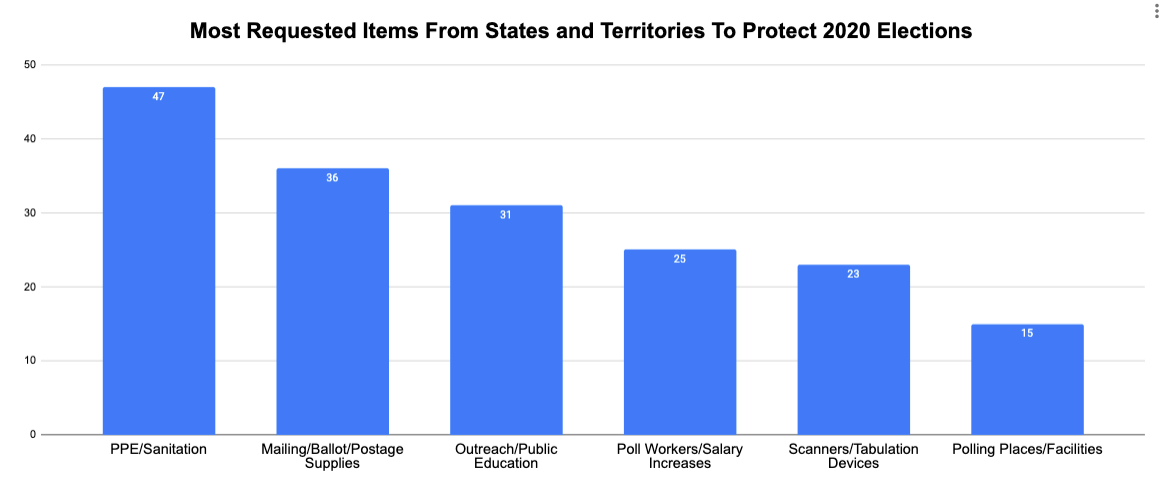The COVID-19 crisis has affected nearly all aspects of American life and elections are no different. The pandemic represents unique challenges for states and localities during an election year. Many states across the nation were forced to delay their primaries and a potential resurgence — a second wave — of COVID-19 may return just in time for the general election.
Trying to balance the health and safety of the public while also ensuring the functioning of the democratic process is no small task. To help address this challenge, Congress recently allocated $400 million dollars from the CARES Act to states to help cover the anticipated costs of holding an election in the midst of a global pandemic.
Nearly every state and territory specifically asked for funding to cover personal protective equipment (PPE) and sanitation materials. Niskanen reviewed all request letters from states and territories and created a taxonomy of requests that sheds light on what states expect their deficiencies will be and how the federal government can assist.

As CNN reported last month, procuring PPE remains a top issue for states as they reopen, and ensuring polling locations are appropriately supplied in November remains a huge issue. The federal government should provide funding to states to protect against fraudulent manufacturers and unstable supply chains.
While voting-by-mail has dominated the public election security discussion, driven by the president’s tweets, there is remarkable consistency from states and localities about broader protection for the 2020 elections. Election officials across the country from both parties continue to express concern about procuring PPE to ensure safer in-person voting.
States have also made repeated requests for mailing, ballot, and postage supplies. While the issue of election integrity and absentee balloting has become politicized, on the ground there is significantly more agreement about how to oversee a pandemic election, as GOP officeholders in at least 16 states are encouraging absentee voting.
States also asked for funds to help pay for more poll workers on Election Day, as well as advertising and educational materials so that voters are informed of how they can vote while remaining safe. Many states also want to purchase additional equipment, including voting machines, as well as scanners and tabulators for ballots.
In total, 56 grants were distributed to states and territories. The average grant size was $7.1 million.
As our colleague Kristie De Peña has noted, “As a nation, we have managed to hold general elections during the Civil War, World War I, the Spanish flu epidemic, WWII, and most recently, when Hurricane Sandy disrupted the 2012 elections. To date, no presidential election has ever been suspended, postponed, or delayed in U.S. history.” While a pandemic that killed over 105,000 Americans will surely challenge that record, adequate congressional funding can ensure that most problems the states have identified are mitigated.
Despite the $400 million contribution from Congress, it is clear that states and localities need additional financial support to ensure that voters are as safe and healthy as possible while participating in the democratic process. With primaries for many states approaching and state coffers bare considering the COVID-19 related economic crisis, more funding is needed and will be hard to come by if not from the federal government.
Ensuring healthy voting and safe elections is not a partisan issue. As a part of the next stimulus bill, Congress should again look to provide more funding to the states to address these pressing issues.
For more information about the CARES Act funds, please see the Election Assistance Commission website: https://www.eac.gov/payments-and-grants/2020-cares-act-grants.
Note: Ricky Schneider, research intern for Niskanen’s immigration department, co-authored this commentary.
Photo Credit: Jessica Whittle Photography